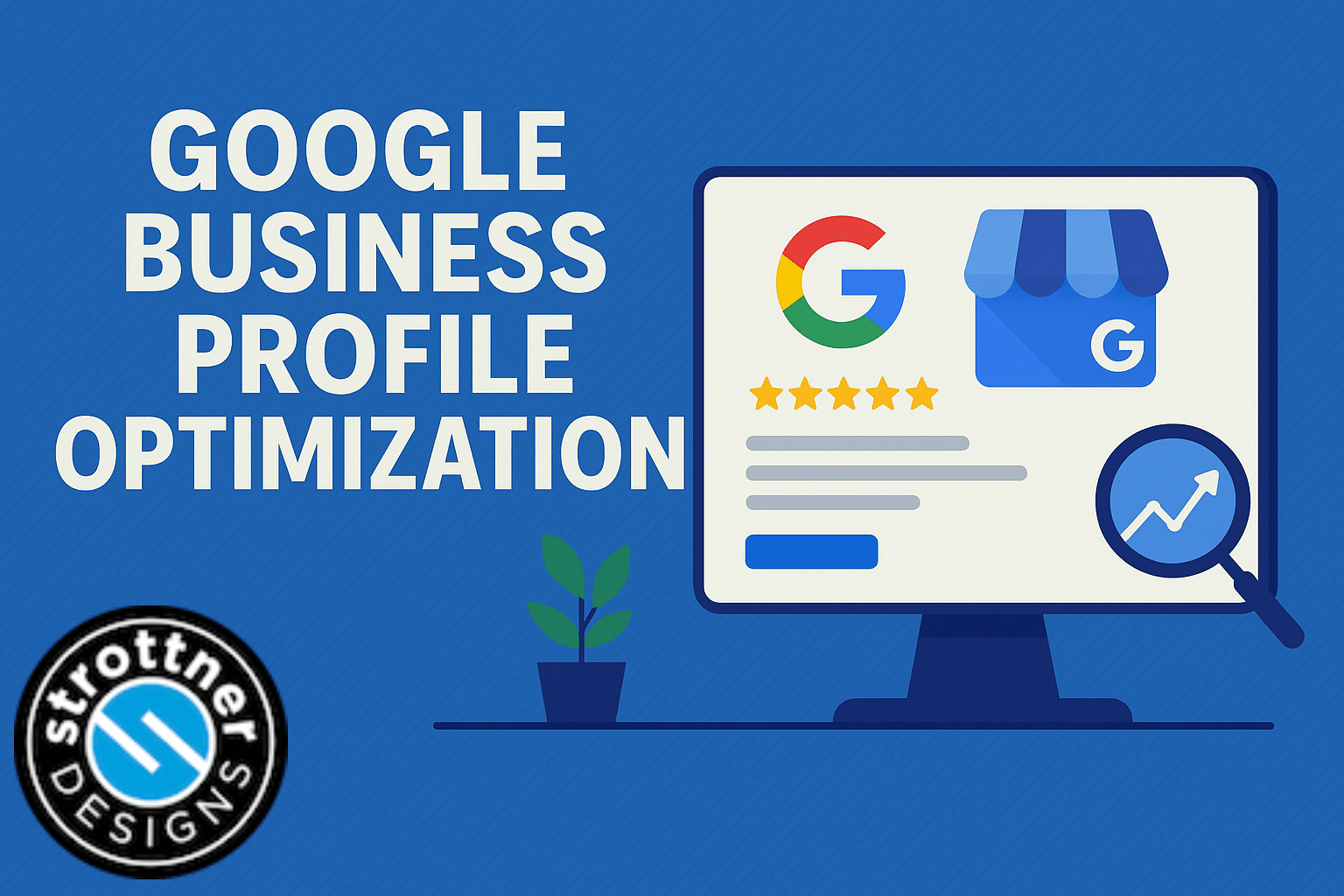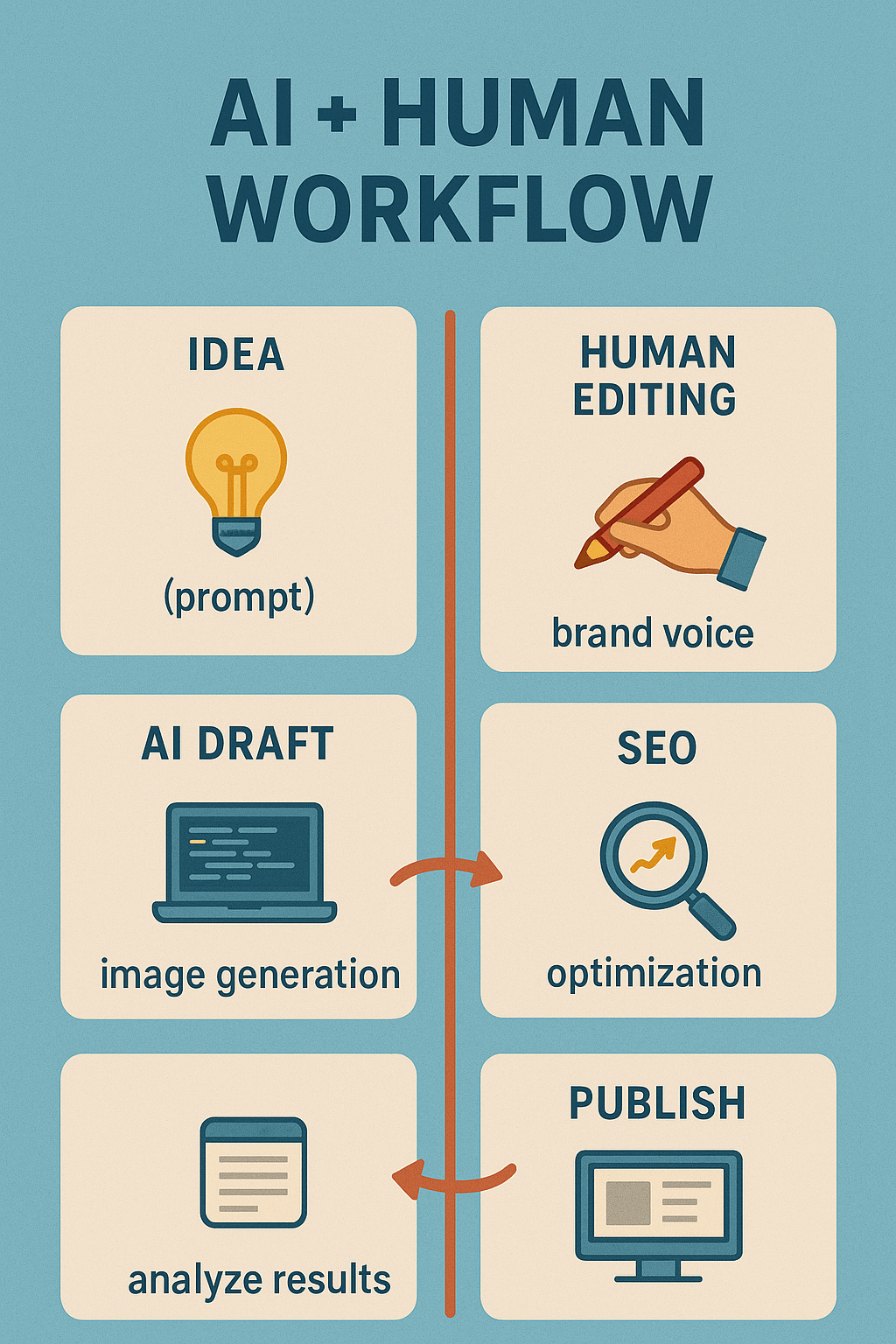
Let’s be real: AI is the new office intern. It’s enthusiastic, works lightning-fast, doesn’t complain about coffee runs, and occasionally hands in work so bizarre you wonder if it was sleep-deprived.
Here at Strottner Designs, we’ve been test-driving these AI tools not just for fun, but because our clients, the folks working to grow their business websites, are consistently asking us:
Over the past two years, we’ve seen firsthand how AI can turbocharge content, and how it can also lead you straight into the ditch.
So let’s unpack the benefits, pitfalls, and lessons we’ve learned using AI in real-world marketing.
Want a 1,000-word draft in under a minute? ChatGPT can do that. Need 20 Instagram captions by lunch? Jasper.ai has your back. The speed is insane.
To put it in perspective: writing a blog post the old-fashioned way is like cooking Thanksgiving dinner from scratch. Using AI is like having a robot chef drop a fully cooked turkey on your table in 60 seconds. Sure, you’ll need to add the cranberry sauce (aka editing), but wow, the time savings. Also, Thanksgiving is literally my favorite meal of the year…get ready for more food metaphors!
Ever stared at a blank page, hoping inspiration would strike, only to find yourself reorganizing your sock drawer instead? AI tools are like an idea faucet. Type in “blog ideas for a local dentist” and you’ll get lists like:
Corny? Yes. But sparks lead to fire. Tools like Copy.ai and Writesonic are great for breaking through creative blocks.
Hiring a professional copywriter is worth every penny—but if you’re running a small business, budgets can be tight. AI tools offer a “starter pack” version of content creation. They’re not Michelin-star chefs, but they’ll whip up a decent fast-food burger.
For startups and solopreneurs, that’s huge.
AI can pump out keyword suggestions, meta descriptions, and alt tags faster than your nephew can say “side hustle.” Tools like Surfer SEO even integrate with AI to help you write blogs that hit the right keyword density.
This is the kind of grunt work most people avoid—so having a machine do it? Priceless.
Need an eye-catching blog header image or an abstract background? MidJourney and DALL·E can create images in seconds. Instead of digging through stock photo sites for that one picture that isn’t awkwardly staged (“Why are those people laughing around a salad again?”), AI lets you generate exactly what you need.
Alright, enough hype. Let’s talk about where AI falls flat.
AI often writes content that feels… generic. Like it came from the world’s most polite middle manager. If you publish it straight from the machine, you’ll blend into the digital wallpaper.
We tested this. One client let AI draft product descriptions. The results? Perfectly fine, and perfectly forgettable. That’s not how you build a brand voice.
Ask AI a factual question and sometimes it will make things up. It doesn’t “know” truth, it just predicts words. That means you might get gems like:
If you don’t fact-check, your blog could turn into a comedy of errors.

There’s a tempting myth: “Just crank out 50 AI blogs and boom, you’ll rank #1.” Spoiler: you won’t.
Google rewards E-E-A-T: experience, expertise, authoritativeness, and trust. AI-generated content without human polish is like junk food for search engines. You’ll fill up fast, but it won’t fuel growth.
Who owns AI-generated content? What if the AI spits out something too close to someone else’s work? These questions don’t have solid answers yet. And AI-generated images? Copyright issues are still messy.
Until the lawyers figure it out, think twice before relying on AI for 100% of your marketing materials.
Your business has a personality, quirky, bold, authoritative, playful. AI, by default, has one voice: “Pleasantly Professional Robot.” If all your content starts sounding like it was written by Siri’s cousin, your customers will notice.
After significant trial, error, and a few “Did AI just say that?” moments, here’s the wisdom we’ve picked up:
It’s fantastic at prepping ingredients: brainstorming, outlining, first drafts. But if you let it run the kitchen, you’ll serve flavorless mush. The secret sauce, the insights, the humor, the strategy, has to come from a human.
AI drafts are like raw clay. They only become art after you sculpt, polish, and glaze. Don’t think of AI as a “done-for-you” solution. Think of it as skipping the blank page stage.
You can automate the what (words, images), but not the why. Strategy, figuring out what your audience needs, when they need it, and how to deliver it, that’s human-only territory.
We let clients know when AI is part of the process. It builds trust, and most find it fascinating. Instead of fearing the robots, they feel like they’re ahead of the curve.
One of our clients, a small but mighty family-owned pizza shop, asked us, “Can AI help us write blog posts to attract more local customers?”
Challenge accepted.
We fired up ChatGPT, gave it a simple prompt: “Write a blog post about creative pizza toppings that will make our restaurant stand out.”
The draft came back fast. Too fast. Within 30 seconds, we had a 1,200-word post full of ideas. Some were pretty good:
Solid. We were nodding along, thinking, “Okay, this is working!”
And then… things went sideways.
The AI confidently suggested:
On top of that, it described these “innovations” as if they were culinary masterpieces everyone had been waiting for. The lasagna pizza, according to the AI, would “marry the hearty flavors of Italy with the convenient portability of pizza.”
Let’s be honest: that’s not portability. That’s chaos.
The client’s reaction? Equal parts horrified and entertained. We edited the list down to the reasonable ideas, polished the copy, and turned it into a blog that actually drew traffic. But the experience taught us a valuable lesson:
AI is great at generating lots of ideas fast—but it doesn’t know the difference between ‘mouthwatering’ and ‘what were you thinking?’
Without a human filter, you risk serving your audience a clam chowder pizza of content. And no one wants that.
Absolutely. But with guardrails.
Think of AI like a power tool. In skilled hands, you can build a mansion. In careless hands, you’ll drill holes through your own plumbing.
Use AI to speed things up, generate ideas, and handle repetitive tasks. But don’t rely on it to tell your story. That’s what your customers connect with, and that part still requires a human touch.
We’re not headed for a dystopian future where Siri is your marketing director and Alexa runs your HR department. (Although, if Alexa wants to take over expense reports, I wouldn’t complain.)
AI isn’t replacing human creativity, it’s amplifying it. Businesses that learn to combine AI’s speed with authentic human strategy will thrive. Those who dump unedited AI sludge onto their websites will fade into the noise.
At Strottner Designs, we’ve made peace with the robots. We treat AI as a turbocharged assistant, not a replacement. And we help our clients do the same; growing their websites, sharpening their SEO, and making sure their brand voice doesn’t sound like it was generated by a toaster.
Because at the end of the day, it’s not about the tool. It’s about your story, your customers, and your growth.
If you’d like to learn more, and how we can help you thrive in an increasingly AI driven marketplace, contact us today!
Interested in a new site and SEO, or just a new site? Visit Home of the Free Website to learn how we can build you a free or affordable site.
Privacy Policy | Sitemap | Terms of Use